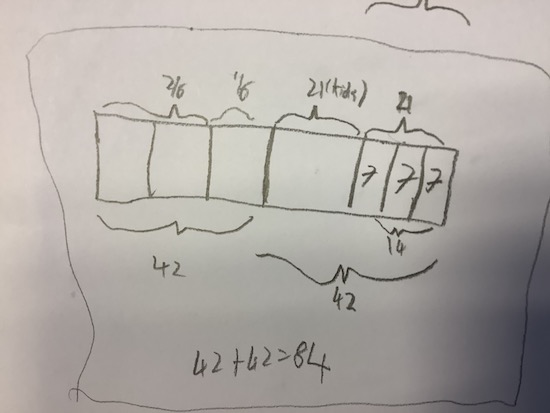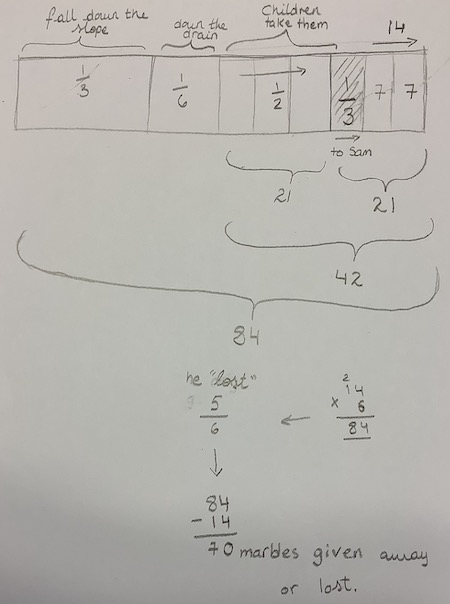Or search by topic
Number and algebra
Geometry and measure
Probability and statistics
Working mathematically
Advanced mathematics
For younger learners
Andy's Marbles



- Problem
- Getting Started
- Student Solutions
- Teachers' Resources
Several very well reasoned solutions came in for this problem about Andy's marbles. Katherine from Treffos, North Wales, pupils from Wigginton Primary and Stephen from Frisby School all went about the problem in a similar way. Stephen said:
I know that to solve this problem I have to work backwards, beginning with the last part, and ending with the first.
Michael from King Henry VIII found a different method for solving the problem:
Andy has x marbles
We also received two solutions from students at The British School of Brussels, both of whom used a bar modelling approach. Here is Monty's:

And here is Julia's:

Can you see how they have used a bar to represent the total number of marbles that Andy had to begin with? Then they have split this 'whole' into parts according to the fractional amounts stated in the problem.
These are all very clear solutions, well done. Working from the end of a problem can be a useful way of tackling it - something to remember!
You may also like
Chocolate
There are three tables in a room with blocks of chocolate on each. Where would be the best place for each child in the class to sit if they came in one at a time?
Four Triangles Puzzle
Cut four triangles from a square as shown in the picture. How many different shapes can you make by fitting the four triangles back together?
Cut it Out
Can you dissect an equilateral triangle into 6 smaller ones? What number of smaller equilateral triangles is it NOT possible to dissect a larger equilateral triangle into?

